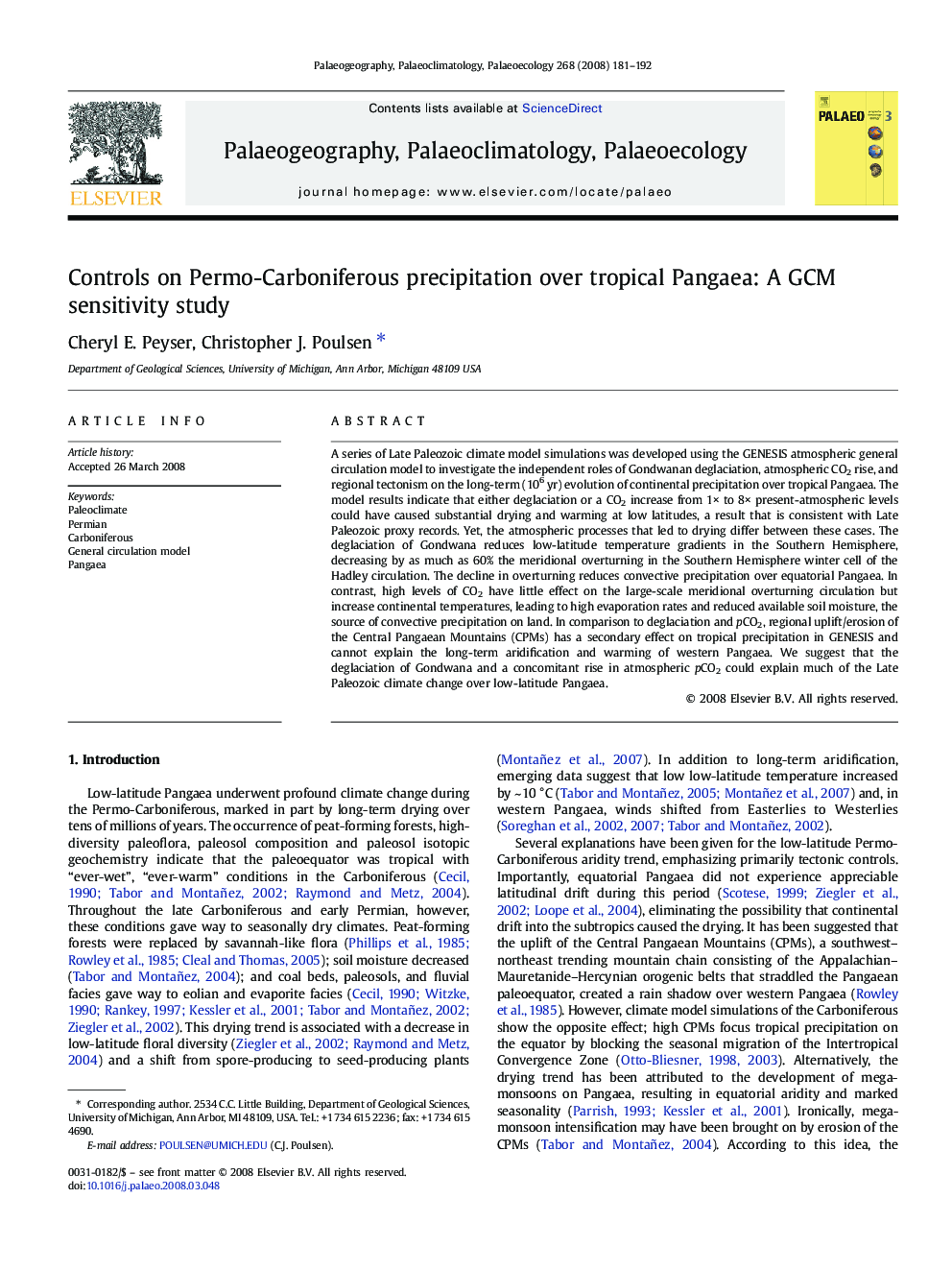| Article ID | Journal | Published Year | Pages | File Type |
|---|---|---|---|---|
| 4468351 | Palaeogeography, Palaeoclimatology, Palaeoecology | 2008 | 12 Pages |
A series of Late Paleozoic climate model simulations was developed using the GENESIS atmospheric general circulation model to investigate the independent roles of Gondwanan deglaciation, atmospheric CO2 rise, and regional tectonism on the long-term (106 yr) evolution of continental precipitation over tropical Pangaea. The model results indicate that either deglaciation or a CO2 increase from 1× to 8× present-atmospheric levels could have caused substantial drying and warming at low latitudes, a result that is consistent with Late Paleozoic proxy records. Yet, the atmospheric processes that led to drying differ between these cases. The deglaciation of Gondwana reduces low-latitude temperature gradients in the Southern Hemisphere, decreasing by as much as 60% the meridional overturning in the Southern Hemisphere winter cell of the Hadley circulation. The decline in overturning reduces convective precipitation over equatorial Pangaea. In contrast, high levels of CO2 have little effect on the large-scale meridional overturning circulation but increase continental temperatures, leading to high evaporation rates and reduced available soil moisture, the source of convective precipitation on land. In comparison to deglaciation and pCO2, regional uplift/erosion of the Central Pangaean Mountains (CPMs) has a secondary effect on tropical precipitation in GENESIS and cannot explain the long-term aridification and warming of western Pangaea. We suggest that the deglaciation of Gondwana and a concomitant rise in atmospheric pCO2 could explain much of the Late Paleozoic climate change over low-latitude Pangaea.
